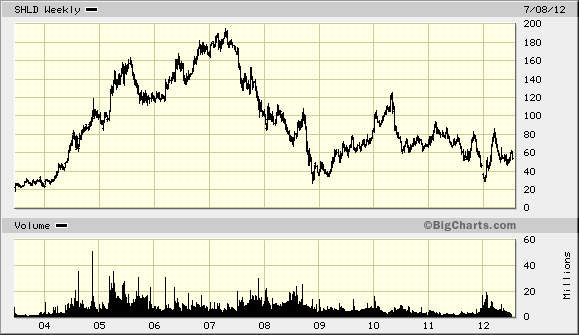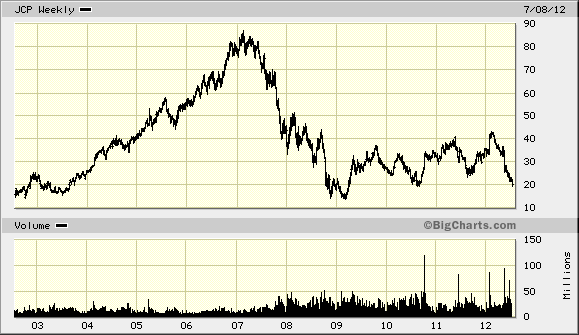Entrepreneurs making a new market!
Centaur Value Fund:
http://www.designs.valueinvestorinsight.com/bonus/bonuscontent/docs/CentaurProcess.pdf
http://www.hedgefundletters.com/wp-content/uploads/2011/09/CVF-One-Page-Summary-July-2010.pdf
A Mistake Not Made
We have long been devoted to the practice of maintaining written research on each of our Fund’s investment ideas as a way to document our thoughts and expectations for each idea. Generally, our research should explain why a given investment should work, the risks that might keep it from working, and define a range of plausible scenarios that we use to formulate our valuation assumptions.
As ideas play out, we document the interim events and any decisions we make along the way. If an investment doesn’t work out, we try to determine whether there is a lesson to be learned that will benefit us in our future decisions.
While this research process is time-consuming, over the years we have come to believe in the approach even though there can be periods where the process doesn’t seem like it is helping our performance. Even worse, we occasionally succumb to mistakes that we should have recognized from prior experience, usually after sufficient time has passed to take the sting out of the prior event. Recently, however, we encountered a situation where we did benefit from having documented our experience with a similar investment many years ago.
Betting on the Jockey Rather than the Horse
As part of our search for promising investments, we look for management teams with great long term track records and that are strongly aligned with common shareholders. Over time, however, we have learned that so-called “jockey” investments can be a form of a value trap in certain conditions. Often, the reputation and track record of a manager or team can overshadow the quality and value of the underlying business. An investment based on faith that a given management will create value without careful analysis of the assets in place can be dangerous, and such stocks are prone to a “halo effect” that lasts until something goes wrong. It is easy as investors to become infatuated with a great management team to the extent that one might be willing to buy a stock without being entirely sure of getting great value for the underlying business. It is therefore quite common for businesses with well-known and well-regarded management to trade for a significant premium to comparable peers.
What we’ve learned is that while we very much prefer to have great “jockeys” directing our investment horses, it is usually a mistake to pay a premium for the privilege. It is usually far better to patiently wait until the stock gets cheap enough to eliminate any management premium. By not paying extra for management, we protect ourselves from the same types of errors in judgment that can occur when assessing business quality or business valuation. When the management team either turns out not to be as good as hoped or alternatively where good management simply makes what turns out to be a mistake that impairs investment value, capital is protected to some degree by ensuring that we do not overpay for the underlying assets or business.
Back in 2006, we decided to make an exception to the above rule of buying the assets at a discount and getting the management for free. The stock was Sears Holdings, and the “jockey” was Edward Lampert.
At the time, we wrote an internal research document arguing that Lampert’s track record was so good that we should purchase Sears Holdings even though we couldn’t make a strong and convincing case that the stock was undervalued. Rather, we made the case that the risk of missing out on the potential benefits of such an obviously great manager in his prime would be the greater sin. In essence, we were willing to pay up for value that hadn’t yet been created because we were so sure it would be. We realized our mistake a year or so later and sold the stock. We never had any real idea what Sears Holdings was worth, and we still don’t.
(CSInvesting: an honest, brave assessment of a permanent loss of capital)
Recently we were struggling with the temptation to invest in a new idea featuring many of the same ingredients: a management team with impressive credentials that is highly incentivized to create value for shareholders taking over a business that has been performing poorly relative to peers, making it ripe for a management turnaround. The stock was JC Penney, which was trading for about $35 at the time of our initial analysis.
After working through several iterations of the potential valuation case, we still couldn’t come up with a clear picture of what the business is worth with any high level of conviction. Still, the idea seemed to pull at us, until we asked ourselves a simple question: if this idea doesn’t work out, is there an obvious mistake that we will be able to point to and kick ourselves for having made? The answer was yes – that we would be making the Sears Holdings “jockey” mistake. We decided against the investment.
In any event, JCP now trades at a much lower price than when we first looked at it, and the market no longer views the management through the same rose-colored lenses it did even three months ago. While we still have a very high regard for the management team at JCP, we haven’t been able to get any more comfortable with our ability to value the business. So even at the much lower price, JC Penney is not an easy call for us.
While we won’t be surprised to see JC Penney work out as an investment – particularly from the recent $20 price – we simply have been unable to get to the point where we have great conviction in the idea. Until we do, we will leave it to others who may understand it better — and we won’t kick ourselves if it turns out to be a money maker for someone else. We are grateful, however, for the benefit of having documented a mistake we made back in 2006 so that we did not repeat it in 2012.
http://seekingalpha.com/article/598621-sell-j-c-penney-too-much-change-too-soon?source=kizur
CSInvesting: This is an example of how you can learn from your investing experience. The author recorded his investment, then honestly assessed how it developed and used what he learned to avoid a future loss.



